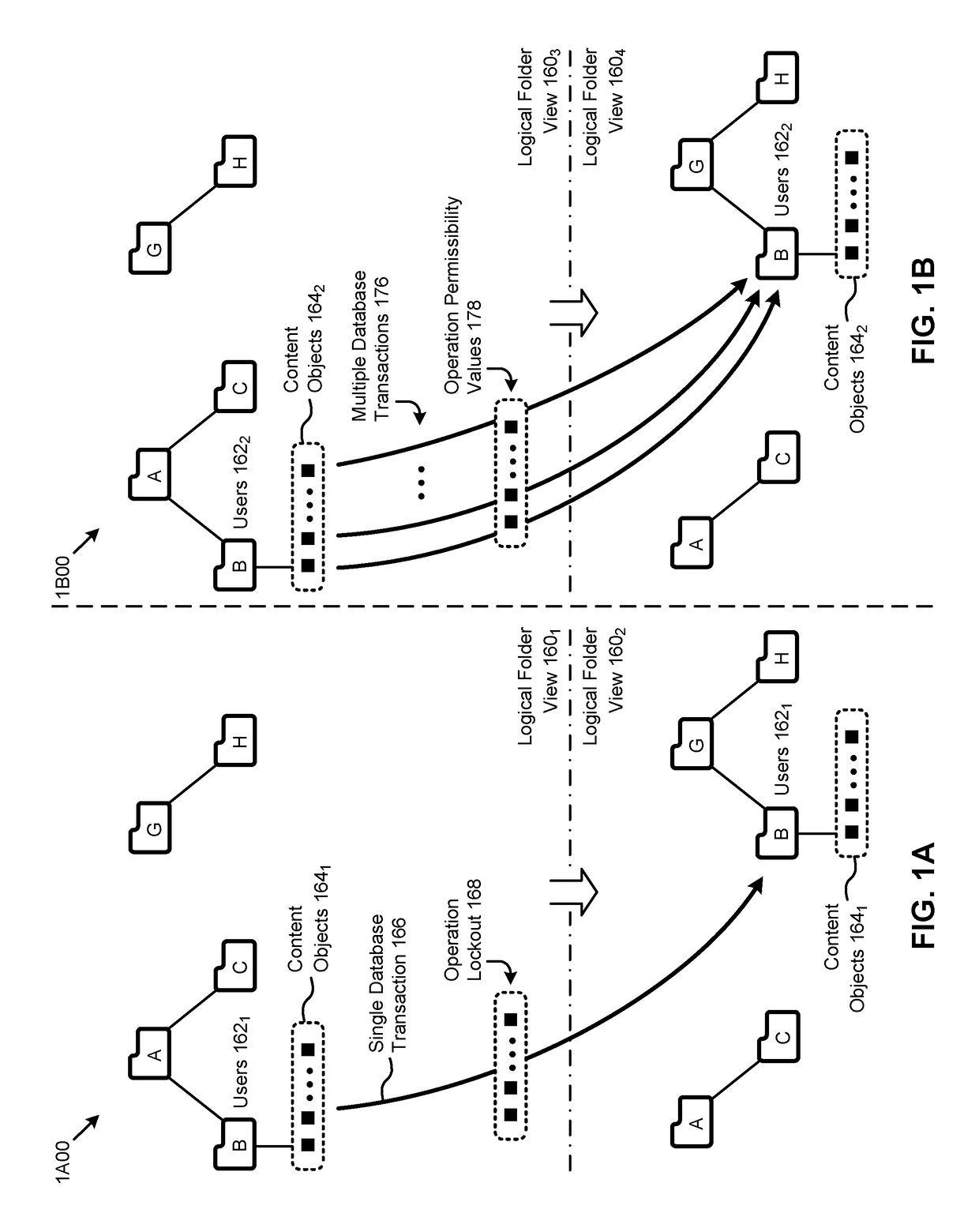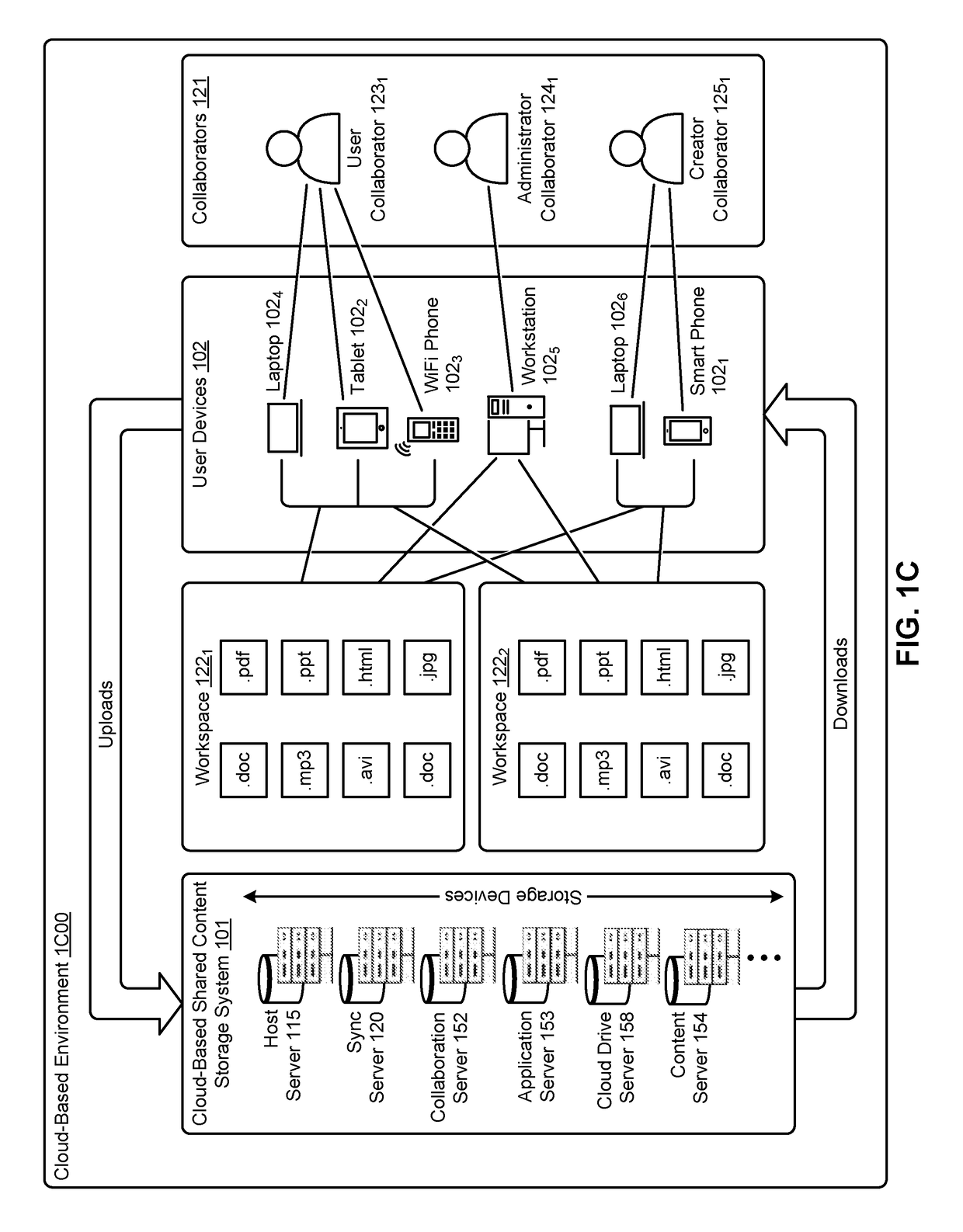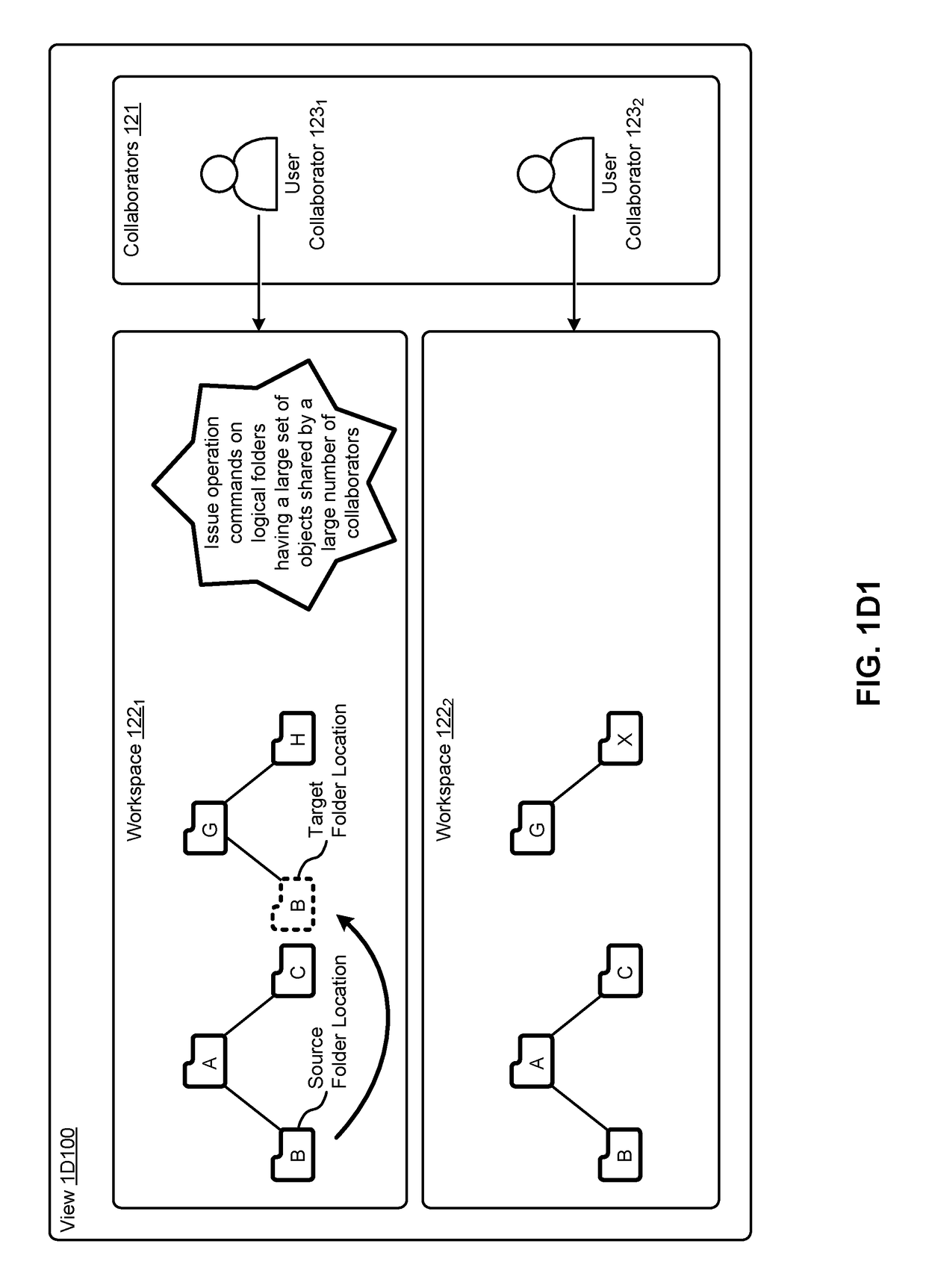Large folder operations in a collaborative cloud-based environment
a collaborative cloud-based environment and large folder technology, applied in the direction of fault response, error detection/correction, instruments, etc., can solve the problems of legacy approaches to implement large folder operations in the foregoing environments, transaction failures, and increased transaction durations, so as to reduce the demand for computer memory, maximize concurrent collaborator object access, and efficiently perform operations
- Summary
- Abstract
- Description
- Claims
- Application Information
AI Technical Summary
Benefits of technology
Problems solved by technology
Method used
Image
Examples
application examples
Additional Practical Application Examples
[0085]FIG. 7A depicts a system 7A00 as an arrangement of computing modules that are interconnected so as to operate cooperatively to implement certain of the herein-disclosed embodiments. The partitioning of system 7A00 is merely illustrative and other partitions are possible. As an option, the system 7A00 may be implemented in the context of the architecture and functionality of the embodiments described herein. Of course, however, the system 7A00 or any operation therein may be carried out in any desired environment.
[0086]The system 7A00 comprises at least one processor and at least one memory, the memory serving to store program instructions corresponding to the operations of the system. As shown, an operation can be implemented in whole or in part using program instructions accessible by a module. The modules are connected to a communication path 7A05, and any operation can communicate with other operations over communication path 7A05. T...
PUM
 Login to View More
Login to View More Abstract
Description
Claims
Application Information
 Login to View More
Login to View More - R&D
- Intellectual Property
- Life Sciences
- Materials
- Tech Scout
- Unparalleled Data Quality
- Higher Quality Content
- 60% Fewer Hallucinations
Browse by: Latest US Patents, China's latest patents, Technical Efficacy Thesaurus, Application Domain, Technology Topic, Popular Technical Reports.
© 2025 PatSnap. All rights reserved.Legal|Privacy policy|Modern Slavery Act Transparency Statement|Sitemap|About US| Contact US: help@patsnap.com



